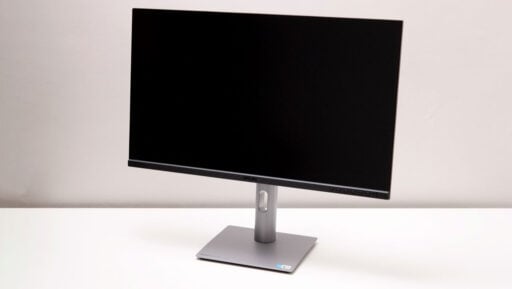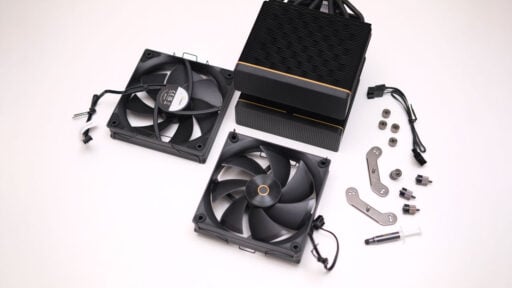In for review is the ASUS ProArt PA279CRV monitor. This is a prosumer-grade display featuring a 4K resolution in a 27-inch WLED IPS panel. It retails for around ₱39,995 PHP locally or at a competitive $469.99 USD via Amazon.
Boasting 99% coverage for both DCI-P3 and Adobe RGB, a color accuracy of ΔE < 2, USB PD, HDR, and loads of connectivity options, the monitor stands out as a strong option within its category.
Disclosure: ASUS sent the ProArt PA279CRV for the purpose of this review. The company did not ask me to say anything particular about it.
Table of Contents:
Technical Specifications
| Display | |
|---|---|
| Panel Size | 27 in |
| Panel/Backlight | IPS |
| Surface Treatment | Anti-Glare/Matte (3H) |
| Resolution | 3840 x 2160 (16:9) |
| Pixel Density | 163 ppi |
| Refresh Rate | 60 Hz |
| Variable Refresh Rate | Adaptive-Sync |
| Brightness | 350 cd/m2 |
| Contrast Ratio | 1,000:1 |
| Response Time | 5 ms (GtG) |
| Color Coverage | 100% sRGB, 99% Adobe RGB, 99% DCI-P3 |
| Color Depth | 10-bit (8-bit + FRC) |
| Connectivity | |
| Display | 2x HDMI 1.4, 2x DisplayPort 1.2 |
| USB | 3x Type-A (3.2 Gen 1), 2x Type-C (3.2 Gen 1 + PD 96 W) |
| Audio | 3.5 mm (Out), 2x 2 W Speaker |
| Ergonomics | |
| VESA Mount | 100 x 100 mm |
| Pivot | -90°/+90° |
| Swivel | -30°/+30° |
| Tilt | -5°/+23° |
| Lift | N/A |
| Anti-strain | Blue Light Filter |
| Dimensions | |
| Length | 612 mm |
| Width | 44 mm |
| Height | 363 mm |
| Weight | 4.07 kg |
Packaging and Accessories
The PA279CRV is cradled by a molded pulp packaging. This is a nice move over the usual styrene foam packaging not only for the environment but also for the overall unboxing experience as well.
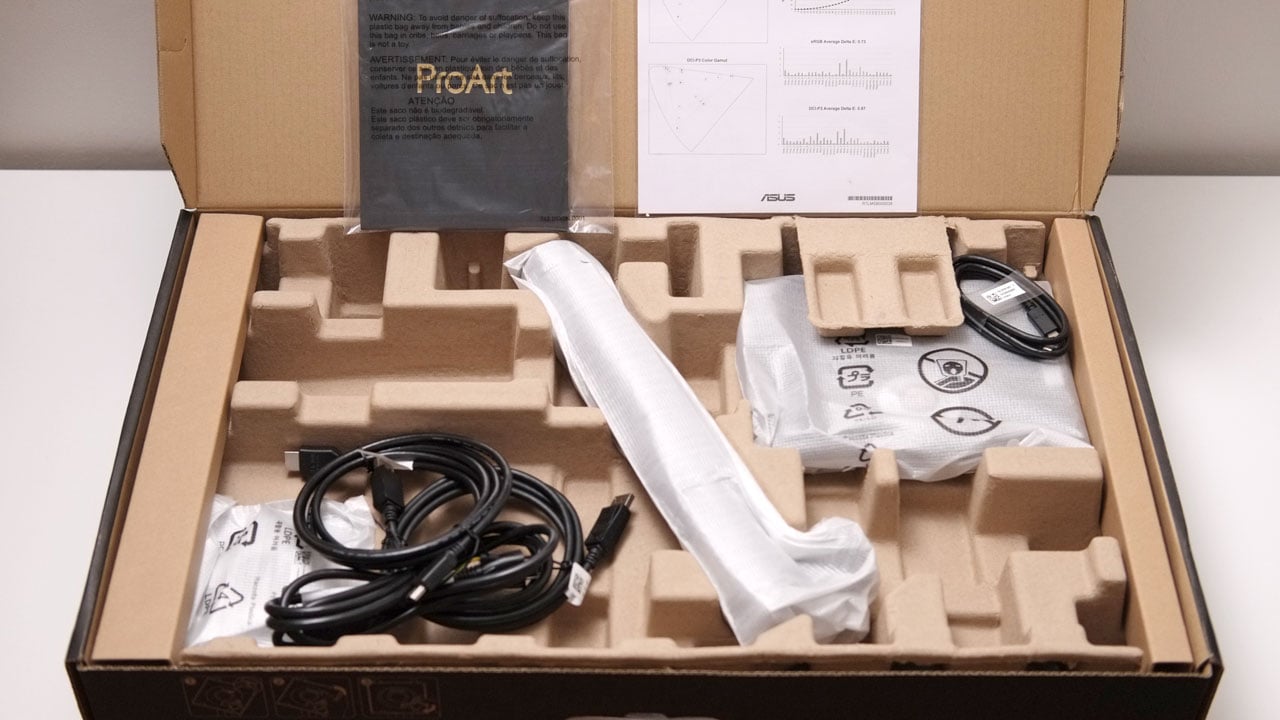
Scope of delivery are as follows:
- ASUS ProArt PA279CRV
- USB Type-C cable
- DisplayPort cable
- HDMI cable
- Power cable
- Documentation(s)
Good bundle of accessories we got here. The Calman Verified validation certificate is also a plus.
Design, Build and Connectivity
The PA279CRV sports sleek lines and the simplicity needed in a working environment – like many ProArt products that came before it.
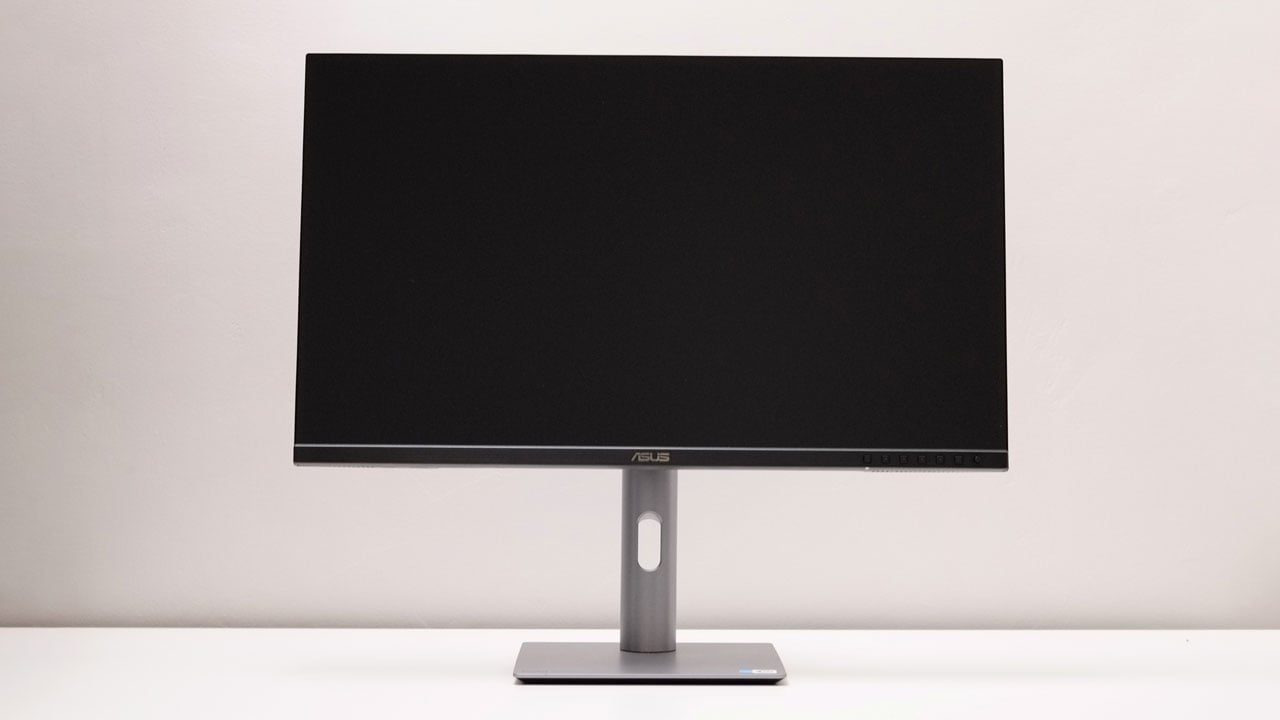
The rear follows the overall tone set by the facade. Neutrality with a hint of modern aesthetics is pretty much the theme with ProArt products so it is refreshing to see compared to the vast number of gaming monitors saturating the market.
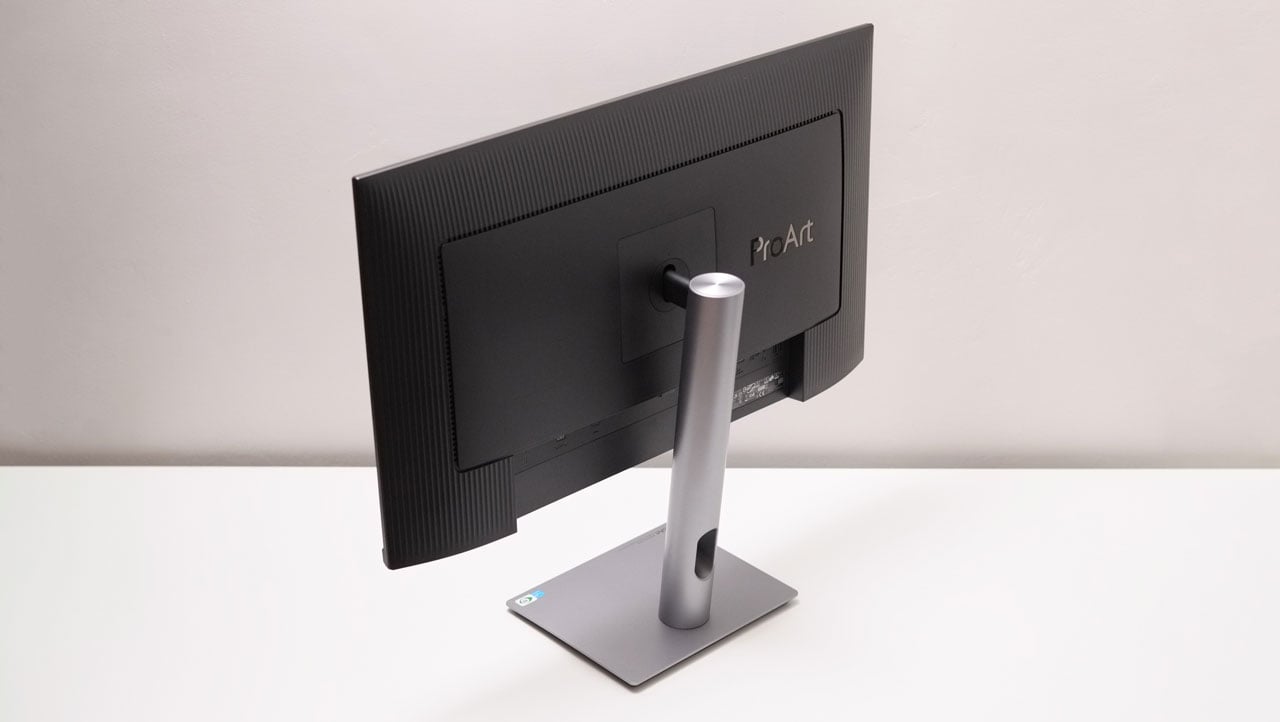
Navigation is made easy with front mounted joystick, power, and shortcut buttons. We could also see the opening here for the right channel 2 W speaker. The monitor has no business rocking such but it is a welcome addition to its set of features.
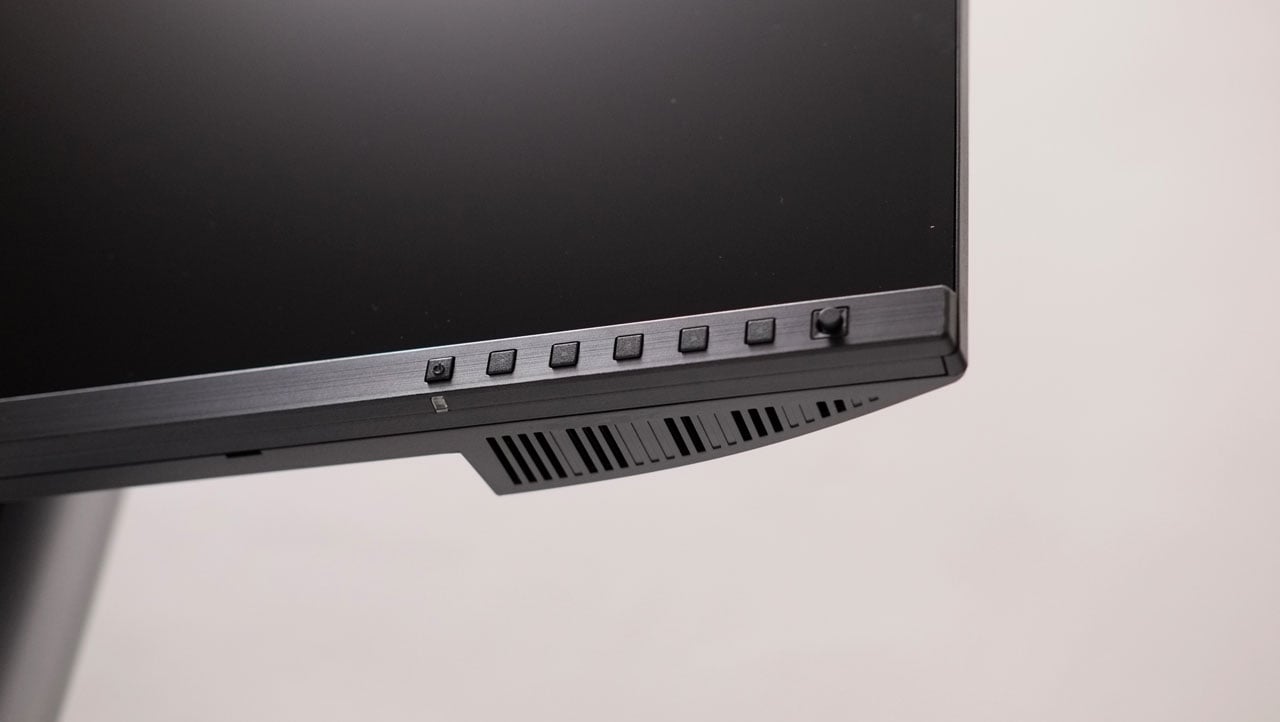
Input and output wise, the PA279CRV houses two HDMI 2.0 ports, two DisplayPort 1.4 ports, a 3.5 mm audio-out port, and two USB Type-A ports. In addition to those, the monitor also comes with two more USB ports in a Type-C interface. One of them works like the rest but the one located next to the audio jack comes with support for PD 96 W, data for the rest of the USB ports, and DisplayPort Alt mode. It is an all-in-one solution for someone with a compatible notebook. Daisy chaining via DisplayPort is also supported.
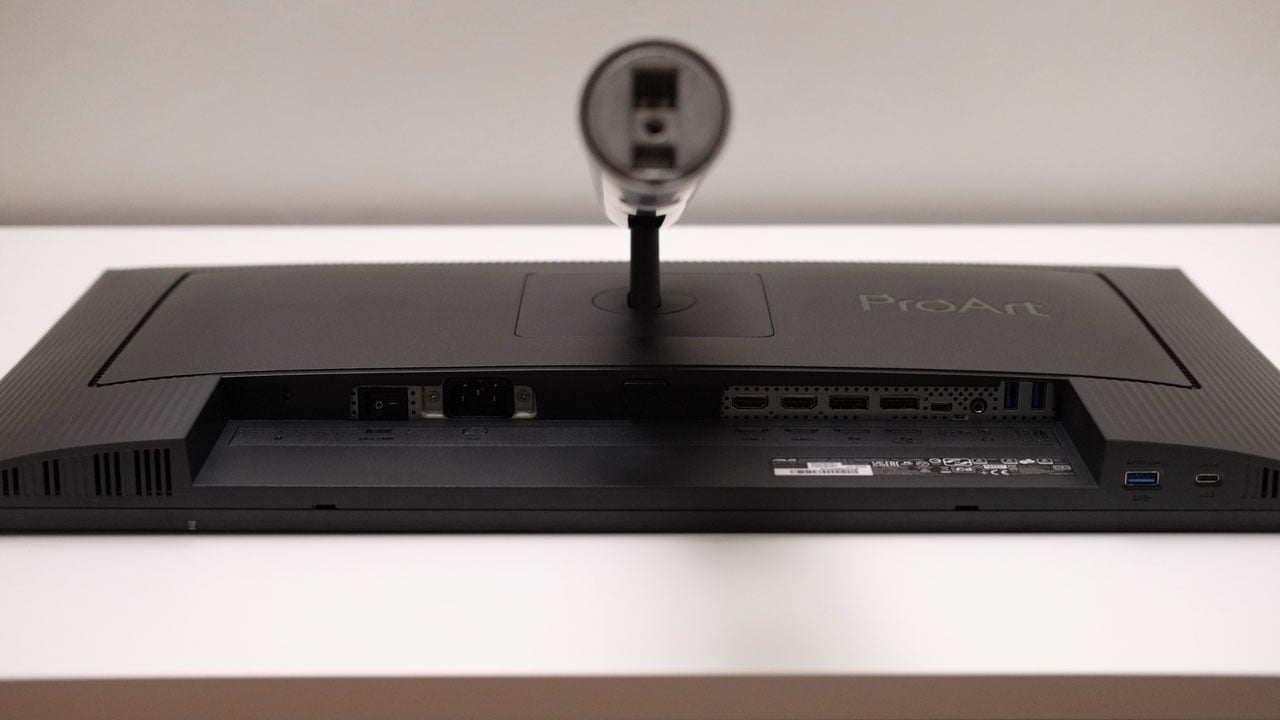
The design, build and connectivity of the ProArt PA279CRV is just what I would expect for its class. Nothing to complain thus far.
OSD
The monitor comes with a well-thought-of OSD menu featuring easy access to the most important settings of the display. We have presets here for almost every picture modes including Rec. 2020 and even DICOM. The PA279CRV also comes with an adjustable color temperature and RGB tuning with both gain and offset values for most presets.
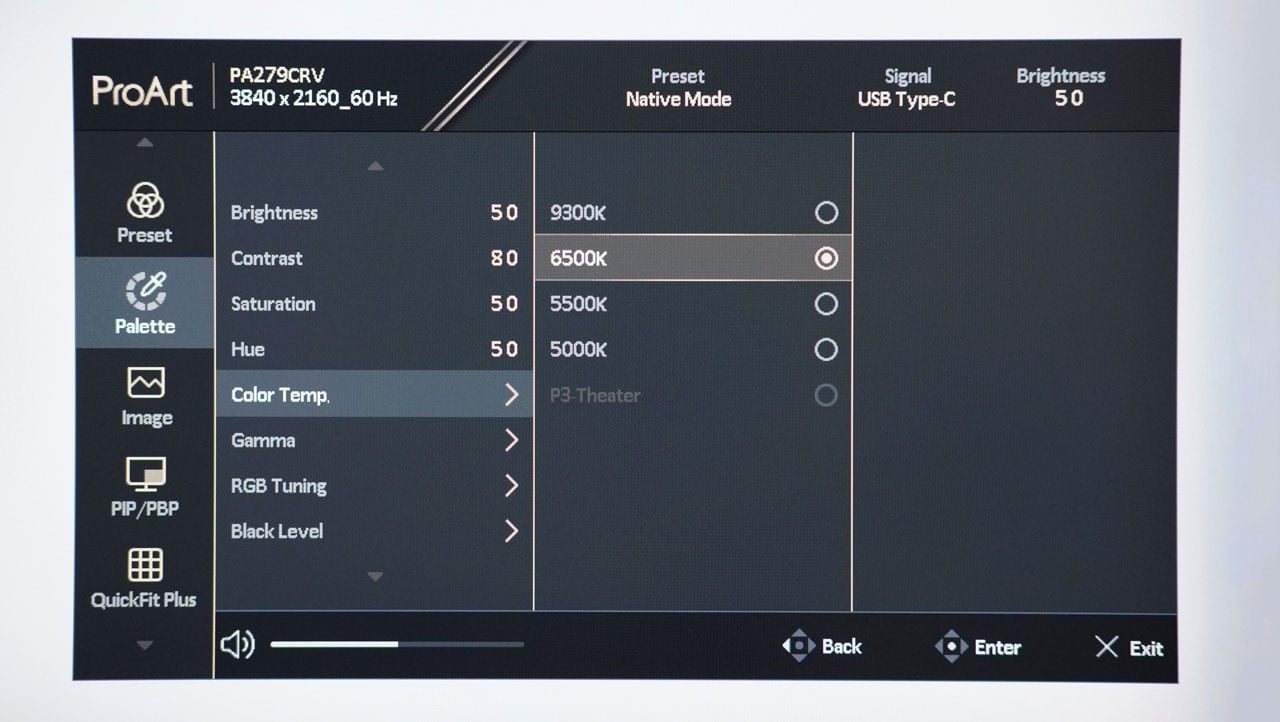
Picture-in-Picture and Picture-by-Picture are also supported which is a nice plus along with a new to me QuickFit Plus feature. Learn more about it at ASUS Support.
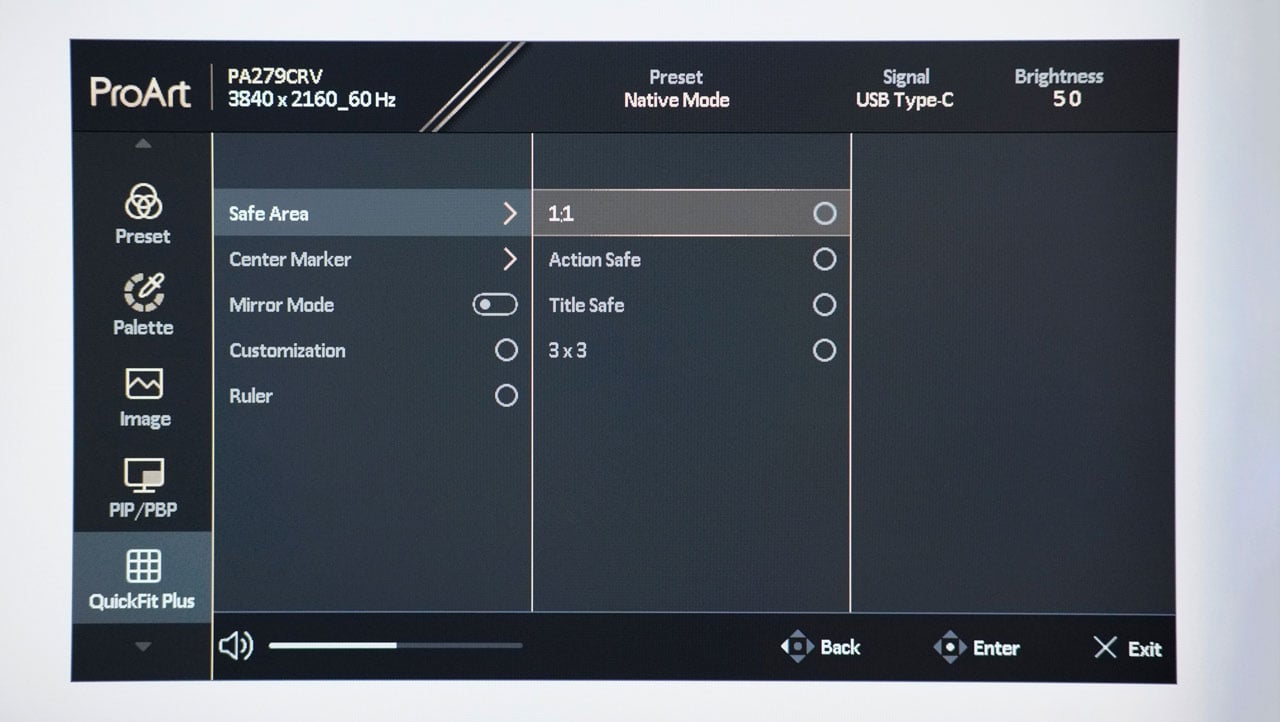
Rich is what I would describe the OSD of the PA279CRV. What I like the most about it is its ability to store palette settings for each presets. This is a league above your average or even high-end gaming monitors.
Ergonomics
The PA279CRV comes with a 27 inch panel featuring a native resolution of 3840 x 2160, translating to a generous 163 ppi. Since it is also an IPS panel, you have a decent amount of viewing angles to work with. The monitor also has an anti-glare lamination along with a blue light filter to combat strain and fatigue.
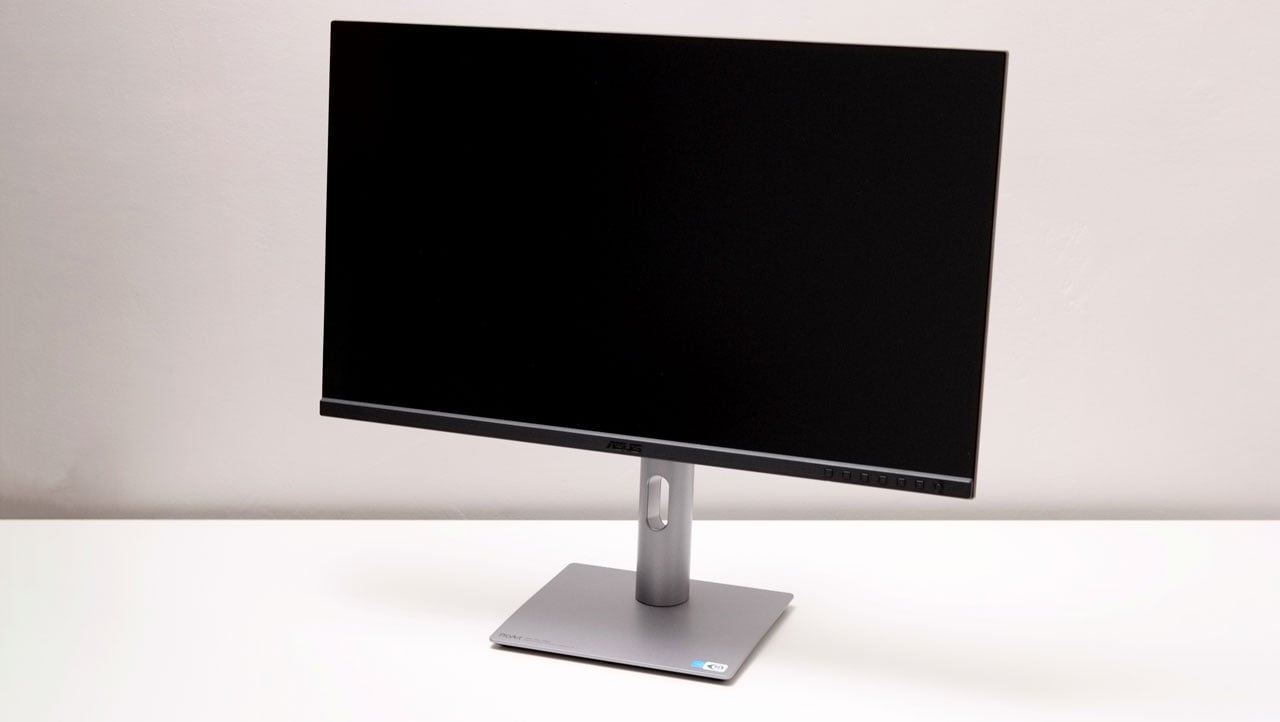
The stand allows pivot, swivel, and tilt to a great degree. I am surprised it didn’t receive any kind of height adjustability though.
OSD Settings
Out of all the presets, we chose Native as the basis for our calibration. I could choose sRGB but that would lock me out of a few settings we needed for our target. Adobe RGB and DCI-P3 were also considered but the default works for me upon first try. Now there are actually 10 presets here and we excluded three of them from the list. These are the HDR and User modes 1 and 2. The latter ones are basically carbon copies of the Native mode.
| Spyder5 ELITE | OSD Settings | ||||
|---|---|---|---|---|
| Settings | Brightness | Black Level | Contrast | White Point |
| Native | 158.8 cd/m² | 0.01% | 840:1 | 6600 K |
| sRGB | 76.8 cd/m² | 0.00% | 780:1 | 6600 K |
| Adobe RGB | 150.6 cd/m² | 0.00% | 820:1 | 6600 K |
| Rec. 2020 | 94.4 cd/m² | 0.00% | 820:1 | 6600 K |
| DCI-P3 | 44.3 cd/m² | 0.00% | 900:1 | 6200 K |
| DICOM | 148.1 cd/m² | 0.01% | 890:1 | 6600 K |
| Rec. 709 | 94.3 cd/m² | 0.00% | 940:1 | 6600 K |
OSD settings are as follows:
- Preset = Native (Default)
- Brightness = 44 (120 cd/m²)
- Contrast = 80 (Default)
- Color Temperature = 6500 (R50, G42, B41)
- Gamma = 2.2
- Color Space = N/A
Shoot me an email if you need the ICC or ICM profile for this particular monitor.
Gamut
Color coverage is exceptional. The ProArt PA279CRV has basically an almost perfect coverage among all four standard gamut available on our test.
| Spyder5 ELITE | Gamut, Percent (%) | ||||
|---|---|---|---|---|
| Color Space | sRGB | AdobeRGB | DCI-P3 | NTSC |
| Measured | 100 | 100 | 100 | 99 |
Tone Response
Gamma level is good for the most part. We’ve got perfect curves from 2.2, 2.4 and 2.6, while we have lesser but still acceptable measured tone response from the 1.8 and 2.0 gamma presets.
| Spyder5 ELITE | Tone Response, Gamma (γ) | |||||
|---|---|---|---|---|---|
| Target | 1.8 | 2.0 | 2.2 | 2.4 | 2.6 |
| Measured | 1.9 | 2.1 | 2.2 | 2.4 | 2.6 |
Brightness and Contrast
Brightness level could be adjusted between 10.4 – 320.8 cd/m². That said, SDR peak is just a few candelas away from the specification. Contrast ratio on the other hand is around 880:1 at 120 cd/m². Looking at the contrast at different brightness levels though, we maxed out at 990:1 at a brightness level of 75%. White point also checks out fine.
| Spyder5 ELITE | Brightness and Contrast | ||||
|---|---|---|---|---|
| Settings | Brightness | Black Level | Contrast | White Point |
| 0% | 10.4 cd/m² | 0.00% | 950:1 | 6200 K |
| 25% | 20.8 cd/m² | 0.14% | 890:1 | 6300 K |
| 50% | 133.3 cd/m² | 0.21% | 890:1 | 6400 K |
| 75% | 179.3 cd/m² | 0.28% | 990:1 | 6500 K |
| 100% | 320.8 cd/m² | 0.33% | 920:1 | 6500 K |
Now I have also tested its performance under HDR mode but sadly, its local dimming zones weren’t up to the task. I could measure the same peak SDR brightness with the mode regardless of window size. That said, this is one of the few things I wish ASUS had improved upon prior to its release.
Screen Uniformity
The PA279CRV’s color uniformity is decent enough but is a bit downer for its class. We observed a group of hot spots here: the left and the upper right part of the panel.
| Spyder5 ELITE | Color Uniformity, Delta-E (ΔE) | ||
|---|---|---|
| 3.9 | 2.5 | 3.3 |
| 3.1 | 0.0 | 1.4 |
| 3.5 | 2.4 | 2.7 |
Luminance hot spots on the other hand are decent on the surrounding areas, with the lower right corner of the panel as the highest offender. Other than that, I would say the monitor passed the test.
| Spyder5 ELITE | Luminance Uniformity, Percent (%) | ||
|---|---|---|
| 4 | 6 | 3 |
| 4 | 0 | 7 |
| 6 | 6 | 11 |
Color Accuracy
With an average Delta-E of 1.62 on a 48 patch color checker, the PA279CRV is certainly within the realm of its claims. With a smaller sample size, it goes even lower at 0.59 ΔE.
| Spyder5 ELITE | Color Accuracy, Delta-E (ΔE) | ||
|---|---|---|
| Patch ID | sRGB | Measured |
| 1E | 249, 242, 238 | 0.66 |
| 2E | 202, 198, 195 | 0.51 |
| 3E | 161, 154, 157 | 0.62 |
| 4E | 122, 118, 116 | 0.57 |
| 5E | 80, 80, 78 | 1.07 |
| 6E | 43, 41, 43 | 1.45 |
| 1F | 0, 127, 159 | 0.69 |
| 2F | 192, 75, 145 | 0.26 |
| 3F | 245, 205, 0 | 0.13 |
| 4F | 186, 26, 51 | 0.22 |
| 5F | 57, 146, 64 | 0.34 |
| 6F | 25, 55, 135 | 0.11 |
| Minimum | 0.11 | |
| Maximum | 1.45 | |
| Average | 0.59 | |
Response Time
The PA279CRV features Trace Free which is meant to improve visuals by limiting ghosting and other artefacts. I’ve tested all levels and found out that Trace Free at 20% is the way to go for this particular model. The results below has an average perceived response time of 13.99 ms with a 1.5 ms best.
| OSRTT | Response Time, Millisecond (ms) | ||||||
|---|---|---|---|---|---|---|
| 0 | 51 | 102 | 153 | 204 | 255 | |
| 0 | 19.1 | 1.5 | 26 | 13 | 16.1 | |
| 51 | 5.5 | 2.1 | 35.2 | 11 | 23.5 | |
| 102 | 9 | 5 | 4.2 | 8 | 31.2 | |
| 153 | 13.4 | 9.7 | 9.6 | 7.9 | 18.9 | |
| 204 | 13 | 12.8 | 14.4 | 13.5 | 18.2 | |
| 255 | 14 | 14 | 17.8 | 17.7 | 13.3 | |
RGB overshoot is mostly good with an average error of 3.93. All these results translates to an acceptable rating for its refresh rate and more so in its class.
Input Lag
Now input lag is excellent, with a reported 6.3 ms average On Display Lag. Not bad at all.
Power
At 120 cd/m², we measured about 23.87 W of power consumption. Results are pretty linear from 0 to a 100 brightness level.
Final Thoughts
The ASUS ProArt PA279CRV presents itself as a formidable prosumer-grade display, offering a 4K UHD experience in a 27-inch WLED IPS panel. Priced at ₱39,995 PHP locally, it falls within the higher-end of the market but has a very competitive pricing at the North American region.
Design-wise, the PA279CRV combines sleek lines with a touch of modern aesthetics, maintaining the neutrality expected in a professional setting. The front-mounted joystick and intuitive button layout contributes to its hassle-free navigation. The inclusion of 2 W speakers, though unconventional for its class, adds an appreciated value to the monitor’s feature set.
Connectivity is comprehensive, featuring HDMI 2.0 ports, DisplayPort 1.4 ports, a 3.5 mm audio-out port, and USB Type-A and Type-C ports. Notably, the Type-C port supports PD 96 W, data transfer, and DisplayPort Alt mode, providing an all-in-one solution for compatible notebooks and desktops.
The OSD menu is a standout feature, offering easy access to essential settings, presets for various picture modes (including Rec. 2020 and DICOM), and the ability to store palette settings for each presets. Ergonomically, the monitor supports pivot, swivel, and tilt, but it ultimately lacks height adjustability which is a bit of a shame.
The display’s color accuracy, tone response, brightness, and contrast are impressive – meeting ASUS’ claims for the most part. Screen uniformity is satisfactory, but for its class I felt that it could be better. Color accuracy on the other hand is within the expected range. With HDR backed by 8-local dimming zones, one might expect it has a good HDR performance but our test results suggest otherwise.
Now, the addition of Trace Free technology enhances visual quality by minimizing ghosting, but the overall perceived response time is not ground breaking even considering its good RGB overshoot performance.
Input lag is commendably low, averaging 6.3 ms, making it suitable for fast-paced tasks and gaming to an extent. Power consumption on the other hand aligns with expectations, with linear results across brightness levels.
In summary, the ASUS ProArt PA279CRV monitor delivers mostly on its promises, providing professionals and enthusiasts with a high-quality display that excels in color accuracy, performance, and features. While the price may be steep (at least locally), the monitor’s capabilities make it a worthwhile investment for those who demands a top-notch visual experience.
ASUS ProArt PA279CRV $469.99 USD

Product Name: ProArt PA279CRV
Product Description: A 27-inch 4K HDR monitor designed for professional video editors. This Calman Verified display boasts a wide color gamut with 99% DCI-P3 and 99% Adobe RGB coverage and is factory pre-calibrated to Delta E < 2 for exceptional color accuracy.
Brand: ASUS
Summary
The ASUS ProArt PA279CRV is a premium 27-inch 4K UHD display, priced at ₱39,995 PHP, justifying its cost with sleek design, comprehensive connectivity, and impressive color accuracy.
